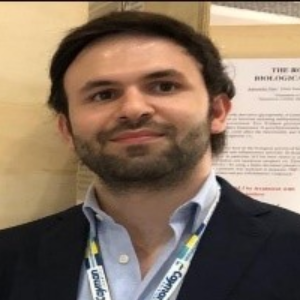Title: Biochemical modification of poly-vinyl-alcohol-based bioplastics with a combinatory approach with microcrystalline cellulose, glycerol and natural antioxidant to increase its food packaging application
Abstract:
Today, more and more attempts are being made to apply the circular economy model, to overcome the linear economy model, also favouring green and ecological industrial and chemical processes. As a result, molecules from the plant world are becoming increasingly relevant and attempts are being made to use them to construct and functionalise new materials. Based on this background, in our laboratory we have developed Poly-vinyl-alcohol-based bioplastics which is particularly useful, as it is synthetic but biodegradable, as demonstrated by numerous studies in the literature. However, already from the first analyses, this material has limitations, such as its high solubility in water and slow biodegradability. Thus, to overcome these limitations we modified the casting solutions with various % of Glycerol (GLY) and Microcrystalline Cellulose (MC). In this way, we increased biodegradability due to the presence of MC, but also increased elasticity and water resistance due to the presence of GLY. Then, we functionalised them with an anthocyanin-enriched fraction (EAC), obtained by green extraction methods (MAE/UAE), from a widespread ornamental plant called Callistemon Citrinus. In this way, we obtained new PVA/GLY/MC bioplastics, which, being functionalised with EAC (0-1%), are useful for food packaging. Subsequently, we performed several assays to analyse their morpho-functional characteristics, moisture and water absorption, optical properties, antioxidant characteristics, and investigated the release of anthocyanidins in different food simulant. First, we performed the FTIR spectra, from where we can see that the MC concentration changes spectrum; infact, we can see a new pronounced peak at 1650 cm−1 which is attributed to the so-called “bound” water. Then, we analyze the interaction between the bioplastics and water. Infact, most biopolymers, like PVA, have the high sensitivity to water and the study of Wa parameter is particularly essential in relation to food packaging applications. In this case, the addition of MC increase by 1.5 times the Wa for PVA/MC, which could be associated with the strong ability to interact with water due to the hydrophilicity of the added cellulose, but when GLY is added, the Wa is greatly reduced. On the other hand, all the films have low moisture content. Regarding optical properties the obtained results show that transparency of the film in terms of light transmittance (T%) for PVA alone is very high, but when functionalised it had a reduced T%. To confirm these results, we also calculated the opacity of our biofilms, in relation to their thickness, and saw how this decreases compared to PVA alone. Furthermore, after different antioxidant activity (DPPH, FRAP, ABTS), we can say that films functionalised with various % EAC, acquire considerable antioxidant power. The release of anthocyanins was assessed by detecting their presence in food simulants, and we saw that the release is independent of the concentration of anthocyanins in the functionalised bioplastic and occurs more in EtOh solution. In conclusion, this work is the first step in understanding how anthocyanins can be used in food packaging to produce biodegradable materials. Of course, further investigations will be carried out to find out the degradation time of these new biomaterials.



